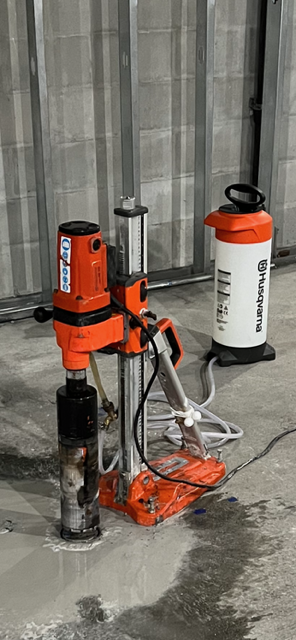
GPR Concrete Imaging Corp
Concrete Scanning company
GPR services to concrete ,bridges, roads and walls.
What is Ground Penetrating Radar technology?
Ground Penetrating Radar (GPR) technology is a geophysical method that uses radar pulses to image the subsurface. It is a cost-effective, non-intrusive method of surveying the subsurface to investigate and located none visible targets in the concrete. Rebar, PT Cables,electrical conduils,etc.
GPR also determinate the concrete thickness.
Concrete and walls core drilling service
What is involved in Concrete Core Drilling?
Concrete core drilling involves drilling perfectly round holes in concrete walls, floors, ceilings, and other structures.
The industry’s core drilling helps create passageways for plumbing and drainage pipes. Many A/C installers require core drilling when installing heating and cooling systems. Additionally, core drilling helps create space for electrical conduits , phone lines, security cameras , internet cables and BDA systems in buildings.

"Ensure accuracy in every construction project! With our **Concrete Scanning and Core Drilling** service, we detect any hidden obstacles in concrete before drilling, ensuring safety, efficiency and cost savings. Trust the experts for risk-free drilling!"

Garage poles and signs installation assistance
BDA System installation assistance.
GPR Method
GPR works by sending a tiny pulse of energy into a material and recording the strength and the time required for the return of any reflected signal. A series of pulses over a single area make up what is called a scan. Reflections are produced whenever the energy pulse enters into a material with different electrical conduction properties or dielectric permittivity from the material it left. The strength, or amplitude, of the reflection is determined by the contrast in the dielectric constants and conductivities of the two materials. This means that a pulse which moves from dry sand (dielectric of 5) to wet sand (dielectric of 30) will produce a very strong reflection, while moving from dry sand (5) to limestone (7) will produce a relatively weak reflection.
While some of the GPR energy pulse is reflected back to the antenna, energy also keeps traveling through the material until it either dissipates (attenuates) or the GPR control unit has closed its time window. The rate of signal attenuation varies widely and is dependent on the properties of the material through which the pulse is passing.

Diagram to avoid structural damage in the installation of punching bags attach to the gym ceiling.
Scan mark to avoid structural damage when anchoring sliding doors in a building balcony.
































